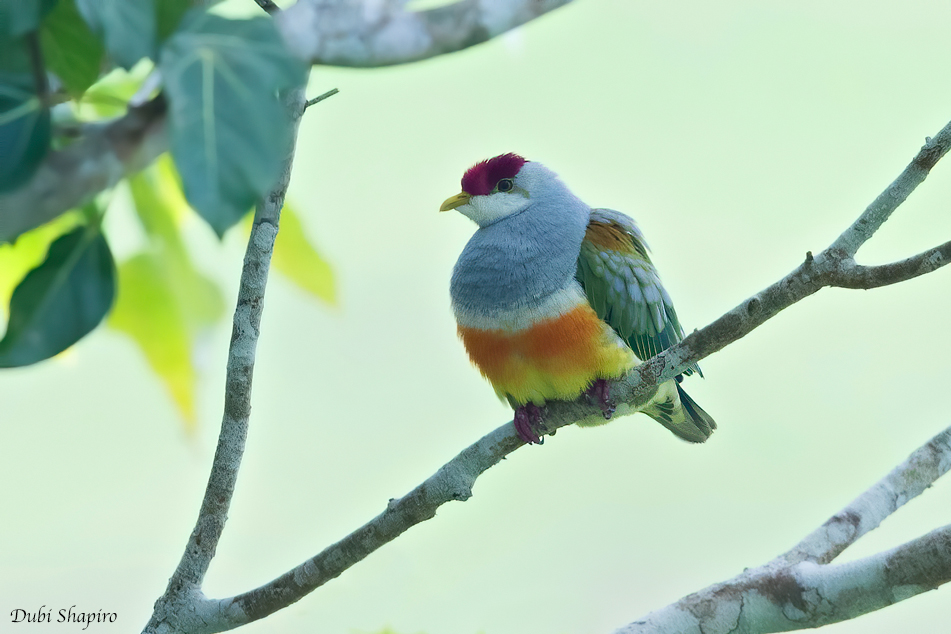

Good Morning POU! Today’s entry has quite a few birds named after him (soon to be renamed).
Wallace’s Owlet-nightjar

Wallace’s Fruit Dove

Alfred Russel Wallace (1823-1913) (pictured below) is undoubtedly a major figure in the history of zoology; he independently conceived of the theory of natural selection and jointly published with Darwin. His work also laid out some important supporting concepts – he identified the faunal boundary line between Asia and Australasia, now know as Wallace’s line as well as the concept of reinforcement in evolutionary speciation. None of these are inconsiderable contributions to science, but they tell a story of him that omits more troubling details.

In addition to these species shown here, who have their common name after him, there are potentially in excess of 300 hundred species and subspecies of animals and plants who have their common name and/or binomial in his honor.
Wallace was a collector, a profession that turns up fairly regularly within natural eponyms – he would gather specimens of plants and animals on upon returning to Europe, sell them off to wealthy museums and private individuals. His first attempt however had ended catastrophically – after spending 1848-1852 in South America, on his return journey the steamer he was travelling on caught fire and sank, losing him almost all the material he had gained over the previous four years, including his notes. At the time he swore off travelling again, but just two years later he found himself in Singapore on the cusp of his most influential expedition.
He would spend the following eight years collecting in the Malay Archipelago, during which time he would collect 125,660 specimens, and was the first to describe 1500 insects and bird species to Western science. What is perhaps more directly influential is the observations he made regarding how species differed between islands, and how different ecological pressures favored different characteristics. He would write an article on the subject with the title “On the Tendency of Varieties to Depart Indefinitely from the Original Type”. He would send this article to one Charles Darwin, who had been pondering upon his own theory of evolution for years but hadn’t published it. It was indeed that another person had independently come to the same conclusions that pushed Darwin into finally finishing and publishing “On the Origin of Species”.
Wallace’s Standardwing

Wallace’s Fairywren
But while the significance should not be discounted, reading his letters and correspondences reveals a far less pleasant picture; a man deeply entrenched in the white supremacist attitudes of his day. Across these texts there are numerous racist remarks directed at various ethnic groups.
“the nigger is very inferior in intellectual capacity to the European. The only question to be determined was, how far that inferiority extends. The African nigger was often spoken of as being the lowest race of mankind; but he believed that the nigger is not the lowest grade. The Australians, North and South American Indians, and even the Malays, he considered to be inferior to the nigger“.
His correspondences from South East Asia in particular contain large amounts of extremely racist views of various ethnic groups living there. Chinese people he describes at “When excited the Chinese are very bloodthirsty and cruel, but they are great cowards“, the descendants of Portuguese as “a mixed, degraded, and degenerate race” and on the indigenous Dyak people of Borneo he makes a statement that implies a disturbing sexualization of children.
“The women are mostly native half-breeds between the Dyak and Chinese, and the mixture has much improved the race. Some of them are really pretty, which can never be said of the Dyaks, except when very young girls.”
The preoccupation with evaluating “race” is a recurring theme in his work; “On the Varieties of Man in the Malay Archipelago” presents imagery of savagery in describing Malay peoples while the Papuan peoples are described as treating their children with violence and cruelty. In the same essay he goes on to praise the colonialism of the Dutch in regard to Minahassa, and how as a result it is now “cultivated” and “civilized”. An account of a discussion from 1864 entitled “Comments of the Effect of Contact Between the Higher and Lower Races of Man” contains much the sort of discussion you would expect of something with that title – essentially stating his belief that other ethnicities must inevitably assimilate with whiteness or go extinct.
Wallace’s Hawk-eagle

Wallace’s Hanging-parrot

Wallace was also an advocate for phrenology, though he seemingly wasn’t so outspoken on the specifics of his views beyond him believing in some undefined correlation between it and ethnography. While perhaps not so outspoken as others in that debunked field, in the context of his belief in there being “higher” and “lower” races of man, this can only reasonably be viewed with deep suspicion.
Later in life, Wallace would begin to associate with two further sets of beliefs that would appear odd contrasts to his scientific background. The more documented of the two was spiritualism, and he strongly advocated for acceptance of it as a full science. More dangerously though, should also be noted that Wallace was an early example of vehement opposition to vaccination. He corresponded with various societies, and in the last few years of his life would accept Honorary Vice-Presidentship of the Anti-Vaccination League of America. Even his statements on this still were tinged with his views on race, in his acceptance letter for the Vice-Presidentship he states he hopes “the blood of the highest races be no longer infected with unknown and unsuspected diseases”.
